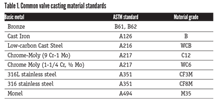NAM Monday Economic Report – November 24, 2014
Central banks around the world have acted recently in an attempt to lift a sagging global economy.
Economic data released last week showing stalled growth in both Asia and Europe helped to support these new monetary policy steps. The HSBC Flash China Manufacturing Purchasing Managers’ Index (PMI) fell to neutral in November, its weakest reading since contracting in the first five months of 2014. Indeed, output contracted for the first time since May. The data were soft in Europe as well. The Markit Flash Eurozone Manufacturing PMI declined to 50.4 in November, with new orders contracting for the third straight month. Real GDP increased 0.2 percent in the third quarter, suggesting the stronger growth continues to remain elusive in the Eurozone. On a year-over-year basis, the European economy has grown 0.8 percent. Meanwhile, Japanese GDP declined for the second straight quarter, suggesting that its economy has slipped back into a recession.
These worldwide moves stand in stark contrast to what is happening in the United States. The Federal Reserve Board ended its quantitative easing program at its October 28–29 meeting, and there is an expectation that it will begin to raise short-term interest rates in either the second or third quarter of 2015. In the minutes to the latest Federal Open Market Committee (FOMC) meeting, participants noted improvements in the U.S. economy, including in the labor market, but they also were concerned about the global outlook. These worries, however, were not enough for FOMC participants to deviate from a path toward normalization. The Federal Reserve has certainly benefited—as have consumers and businesses—from reduced pricing pressures, with falling energy costs pushing down annual inflation rates.
The manufacturing data released last week were mostly positive. Sentiment surveys from the Kansas City, New York and Philadelphia Federal Reserve Banks found that activity picked up in November in the sector, with stronger demand and output cited. Of these reports, the standout was the responses to the Philadelphia survey, with its composite index measuring an off-the-chart 40.8 for the month. You would have to go back two decades to find a higher figure (December 1993’s 41.2 reading). That optimism carried through to the forward-looking indices, with manufacturers generally upbeat about the next six months in each regional survey.
At the same time, manufacturing production rose 0.2 percent in October. While output in the sector has risen 3.4 percent year-over-year, the pace has decelerated over the past three months. Capacity utilization for manufacturers has also edged lower over this time frame, down from 77.8 percent in July to 77.2 percent in October. As such, manufacturing production has been softer this autumn than we might prefer. The global environment might account for some of that weakness, but there are also signs that domestic demand has been more cautious than desired.
In terms of construction, the most recent housing market data were mixed, but the sector shows signs of improvement longer term. New housing starts decreased from 1,038,000 annualized units in September to 1,008,000 units in October. The decline, however, came from the highly volatile multifamily segment, with single-family starts up for the month and year-over-year. In addition, housing permits were also higher, which bodes well for future activity. I continue to predict housing starts solidly in the 1.1 million unit range by the beginning of 2015, and the pace of housing permits in this report puts this outlook clearly within range. Homebuilders were also more upbeat in November, with the Housing Market Index now exceeding 50 for five straight months.
This week, we will get a revised figure for third-quarter real GDP growth on Tuesday. It had originally been estimated to be 3.5 percent, with the current consensus calling for a revision to 3.3 percent growth. In addition, the Dallas and Richmond Federal Reserve Banks will release their November manufacturing surveys on Monday and Tuesday, respectively. Other highlights include consumer confidence, durable goods orders and personal income and spending. There will be no economic releases on Thursday and Friday due to the Thanksgiving holiday.
Chad Moutray is the chief economist, National Association of Manufacturers.
RELATED CONTENT
-
Editor's Product Picks
Neles introduces valve-sizing and selection software for all intelligent automated process valves.
-
New Technologies Solve Severe Cavitation Problems
An advanced anti-cavitation control valve design enabled by 3D metal printing solved a power plant’s severe cavitation problem and dramatically improved its bottom line.
-
The Final Control Element: Controlling Energy Transformation
When selecting control valves, be sure to properly evaluate the process conditions to identify potential issues and select the proper management techniques.








 Unloading large gate valve.jpg;maxWidth=214)

